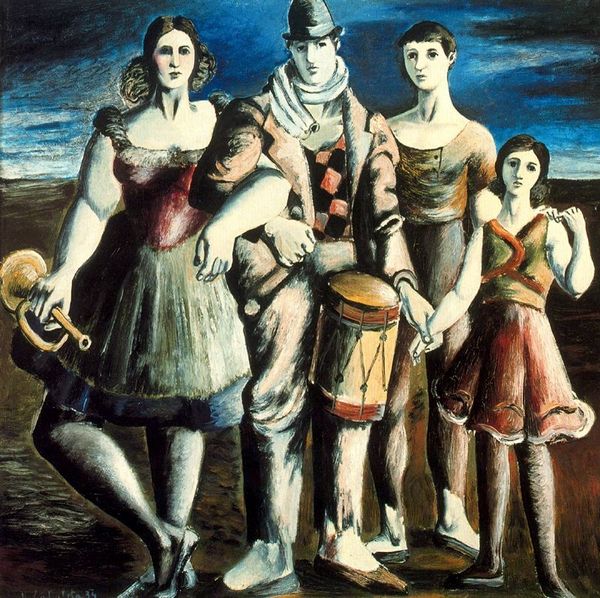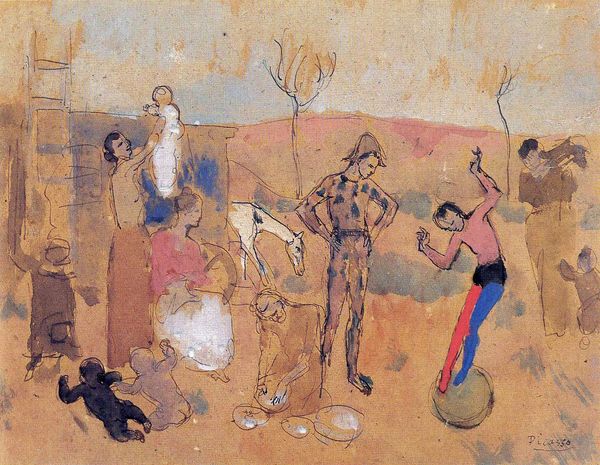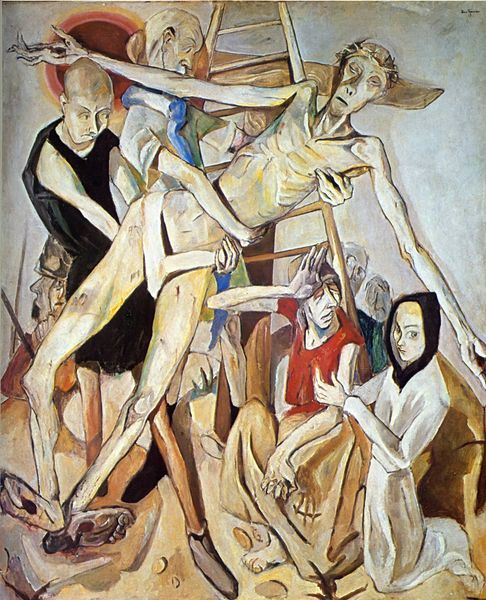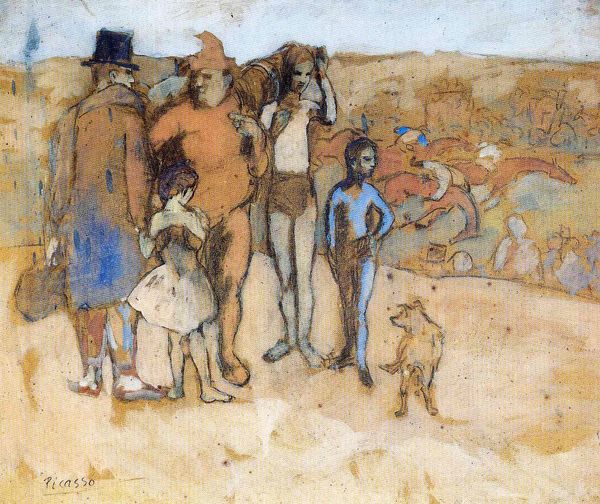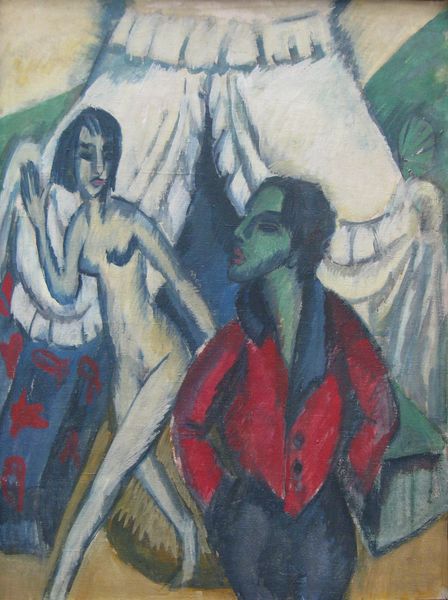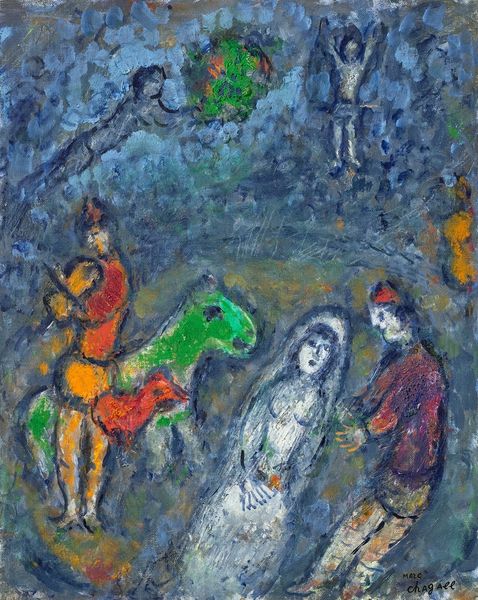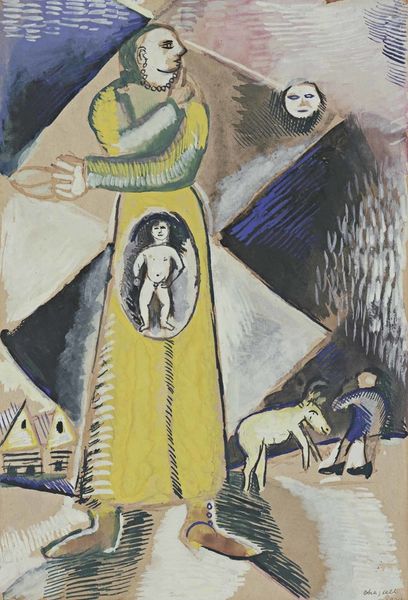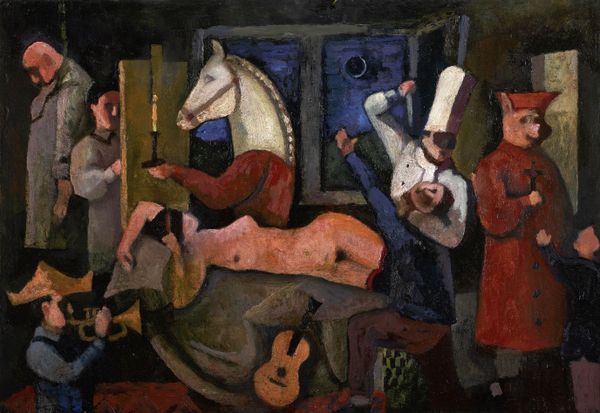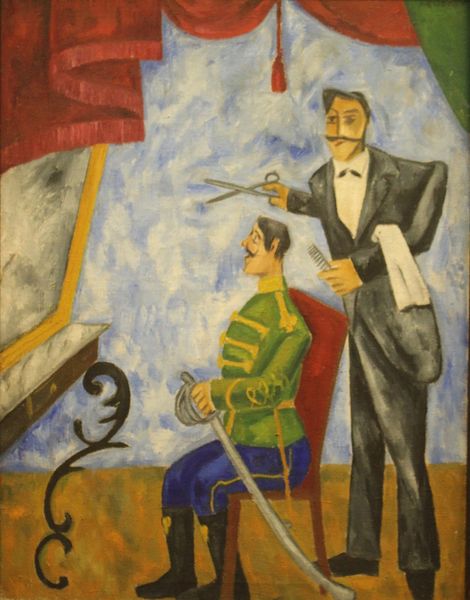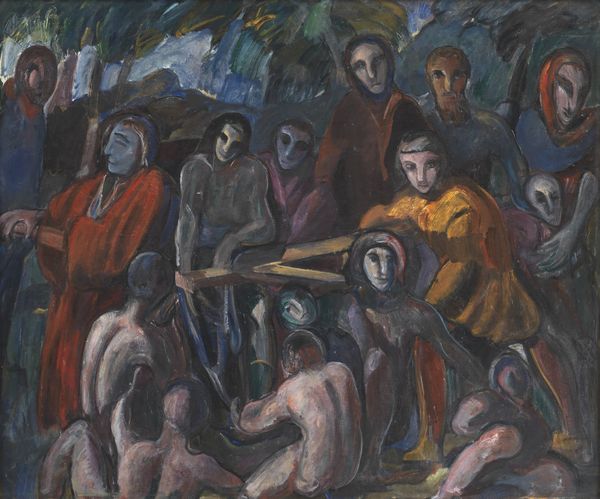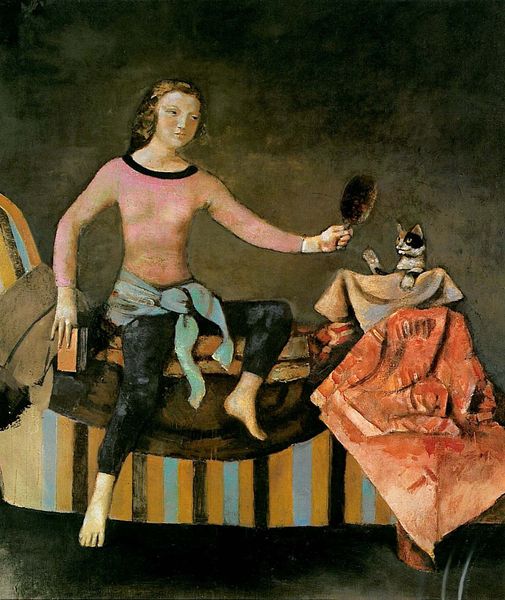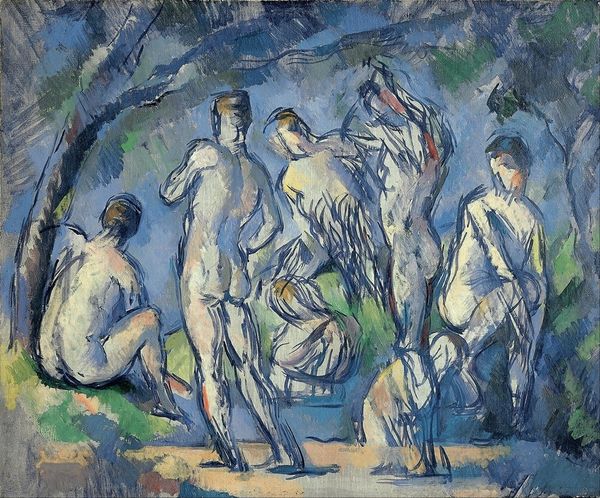
Dimensions: 212.8 x 229.6 cm
Copyright: Public domain US
Curator: Picasso's "Family of Acrobats," painted in 1905, greets us today—a haunting scene rendered in oil on canvas. Editor: It's strikingly melancholic, wouldn't you say? They all seem so… distant. A tableau of itinerant performers stranded in a bleak landscape. Curator: Yes, there’s a fragility here, definitely. They look like players caught between performances. You can feel a little solitude even among the group. Look how he mutes the colors! Everything blends into that grayish tone… the sky, the ground almost… Editor: It evokes a powerful sense of alienation. Circus performers, often romanticized, are presented here as vulnerable, almost destitute. Are they a metaphor for the artist's own sense of marginalization? For societal outsiders? The harlequin, of course, traditionally represents the outsider. Curator: Perhaps. This was right after his Blue Period. The harlequin's costume gives us a glimpse into the Commedia dell'Arte roots—but it also marks the arrival of a symbolic alter ego he adopted, like a protective garment. Editor: There's something quietly revolutionary in the depiction of family dynamics. Who do they belong to? Do these performers also perform a familial role? Do they only survive under the sign of labour and artistic work? And the woman seated—the Madonna figure detached from the others—what is her role within this "family?" Curator: You make an interesting point about her separation! Maybe she embodies a longing for domesticity… stability? Though, maybe, she is merely resting... I appreciate Picasso's decision to portray their humanity rather than exaggerate their flamboyance. Editor: Absolutely. The painting questions traditional family structures and societal expectations, pushing for recognition of alternative social bonds beyond the norm. It invites us to reconsider what “family” means. Curator: Yes. When you step back, the "Family of Acrobats" reveals how fleeting connection might be. What it reveals to us, really, is an appreciation for a community defined outside the ordinary… Editor: I agree completely. Picasso uses them to make us consider a space of constant precariousness as the starting point to create your own community, to search for your own. And the power, also, that art may have on achieving this goal.
Comments
No comments
Be the first to comment and join the conversation on the ultimate creative platform.
